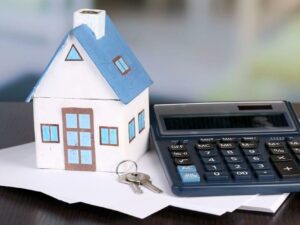
Advice on overseas foreign currency mortgages
Your first overseas property can be an exciting yet scary time. There are many financial pitfalls that need to be avoided. MyCurrencyTransfer.com is here to help you make the most of your overseas mortgage and to highlight the benefits and dangers of foreign currency mortgages.
What is a foreign currency mortgage and why would I need it?
When buying a property abroad you may be paying the mortgage in the currency of the country your property in. Read on to find out the advantages and disadvantages to having a foreign currency mortgage.
Benefits
One of the main benefits of foreign currency mortgages is also the main disadvantage- the exchange rate volatility. If the currency you’re paying your mortgage in falls against the rate of the currency you are being paid in, then you the price in sterling terms becomes more beneficial.
For example: If you were to pay €550 every month for 12 months where the exchange rate was £1- €1.10. This would mean that you would pay your mortgage provider £500 per month. However, if the rate was to fluctuate so that the Euro fell against Sterling to €1.22 then you would end up paying the equivalent of just £450 meaning that you managed to save money which you wouldn’t have been able to if you were paying your mortgage in the same currency as your incomings.
So, if sterling had climbed against your mortgages currency then buying that currency would be much cheaper and this means that your mortgage will have decreased and you would end up paying less than you had before.
Dangers
If the pound crashed against your mortgages currency then you could be in trouble. Due to the inconstant nature of the market, you could find your repayments increasing quickly without any real insight to when it might settle again.
Multi currency mortgages are foreign currency mortgages in which you make payments with a number of different currencies. Whilst this is seen as a good choice as some currencies will strengthen whilst others weaken against your incoming currency at the same time, it can actually be more of a risk than it seems and is incredibly difficult to manage properly.
The multi currency switching facility means you are able to switch the currency you are charged in into a currency that is weakening. For instance, say you borrowed in Euros but the single currency rapidly strengthened against pounds which happens to be the currency you are paid in. You have ended up paying more as the Euros consequently strengthened. However with a multi currency switching facility you can change the repayments to a falling currency against sterling. If the dollar had dropped further than both the Pound and the Euro then you could change your mortgage to Dollars as you could buy more Dollars for the pound. If not done correctly then you can lose a large sum of money but it is an effective option for those who have the time, patience and skill to manage it. For the amateur it’s probably not a good option.
There is lots of money to be saved through foreign currency mortgages but there is also a lot that can be lost. It’s important to remember the markets instability and be prepared for possible large increases in your repayments and make sure to seek a foreign exchange specialists help beforehand. It’s important to get a good exchange rate for your money so stay away from banks and consider a regular overseas payment plan! Here you could fix your FX payments (forward contract) by up to 18 months in advance and help you budget.
Check out our FX price comparison tool as we compare the service of all the major players, helping you manage your international payments in a far more streamlined direction.









